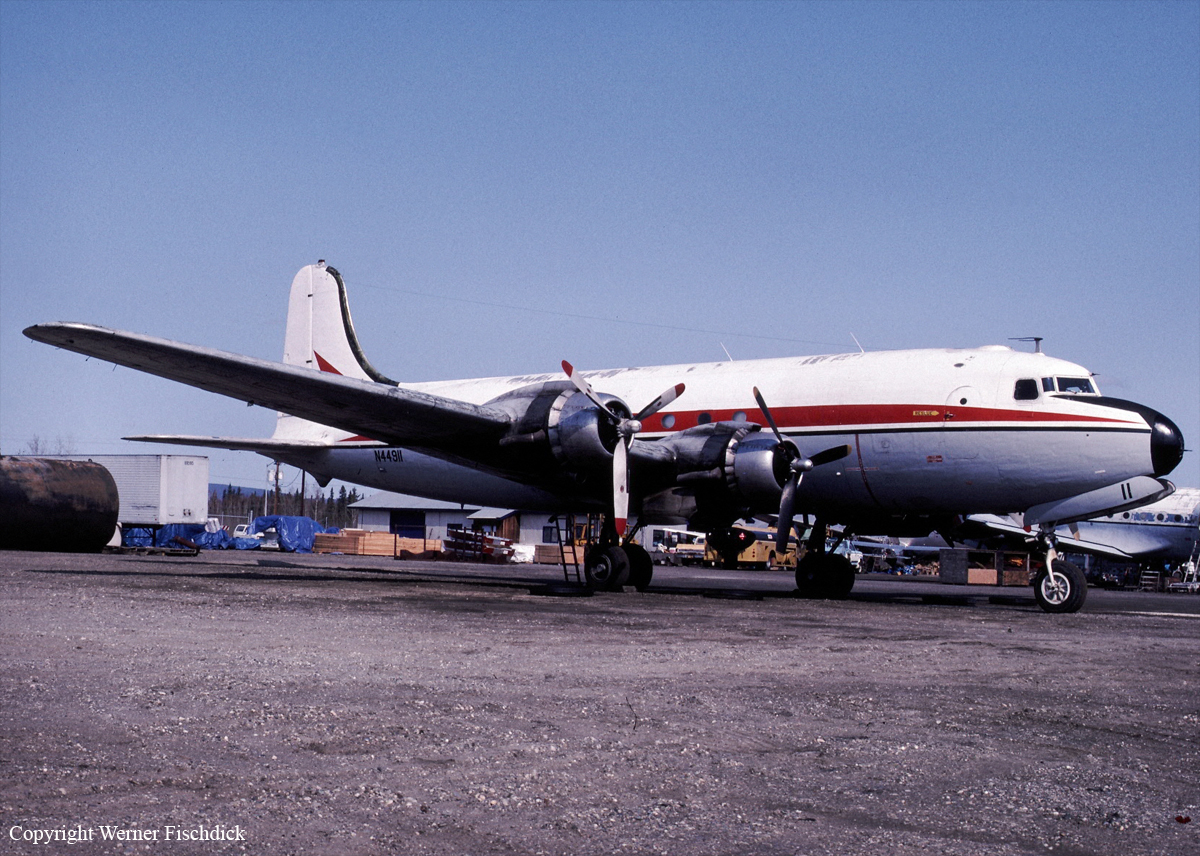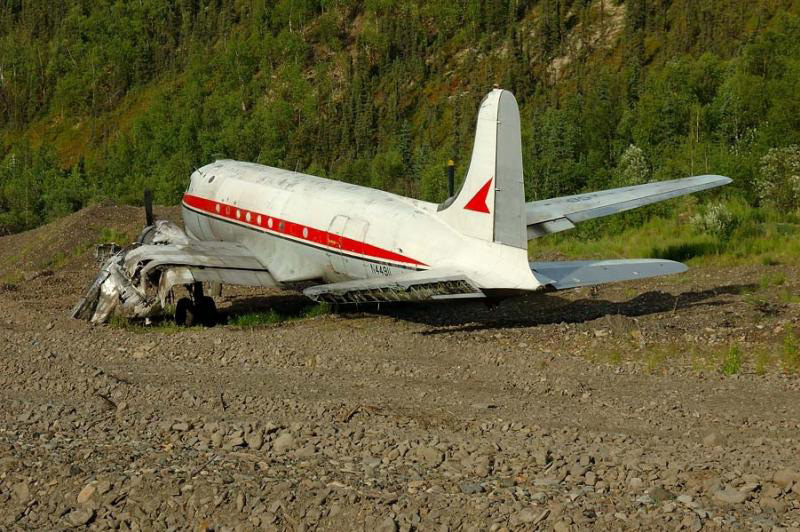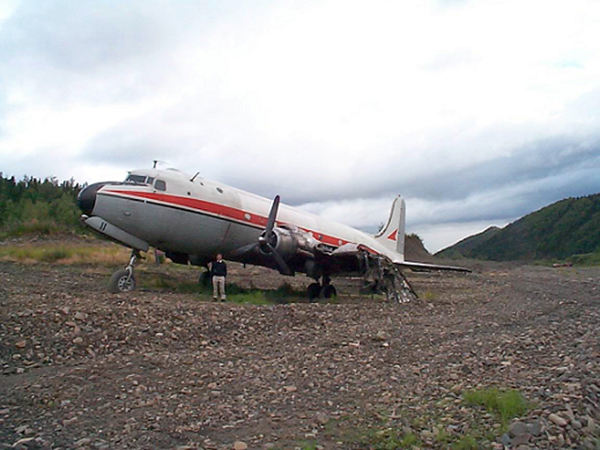Zone
Crash of a Carvair ATL-98 in Nixon Fork Mine
Date & Time:
May 30, 2007 at 1200 LT
Registration:
N898AT
Survivors:
Yes
Schedule:
Fairbanks - Nixon Fork Mine
MSN:
42994
YOM:
1946
Crew on board:
2
Crew fatalities:
Pax on board:
0
Pax fatalities:
Other fatalities:
Total fatalities:
0
Captain / Total hours on type:
13600.00
Aircraft flight hours:
55753
Circumstances:
The captain was making a VFR landing approach to a remote mining airstrip in a modified Douglas DC-4 airplane at the end of a cross-country nonscheduled cargo flight. The modified airplane had a raised cockpit above the fuselage to accommodate an upward swinging nose door. During the landing flare/touchdown, the airplane undershot the runway threshold, and right main landing gear struck the lip of the runway. The right main landing gear was torn off, which allowed the nose and right wing to collide with the runway surface. The right wing was torn off the fuselage and caught fire. The fuselage, containing the cargo of fuel bladders, slid to a stop and rolled about 90 degrees to the left. The pilot indicated that due to the additional cockpit height of the modified airplane, versus a standard Douglas DC-4 airplane, the airplane was lower than he perceived.
Probable cause:
An undershoot and collision with the runway when the pilot misjudged the distance/altitude during the landing flare/touchdown.
Final Report:
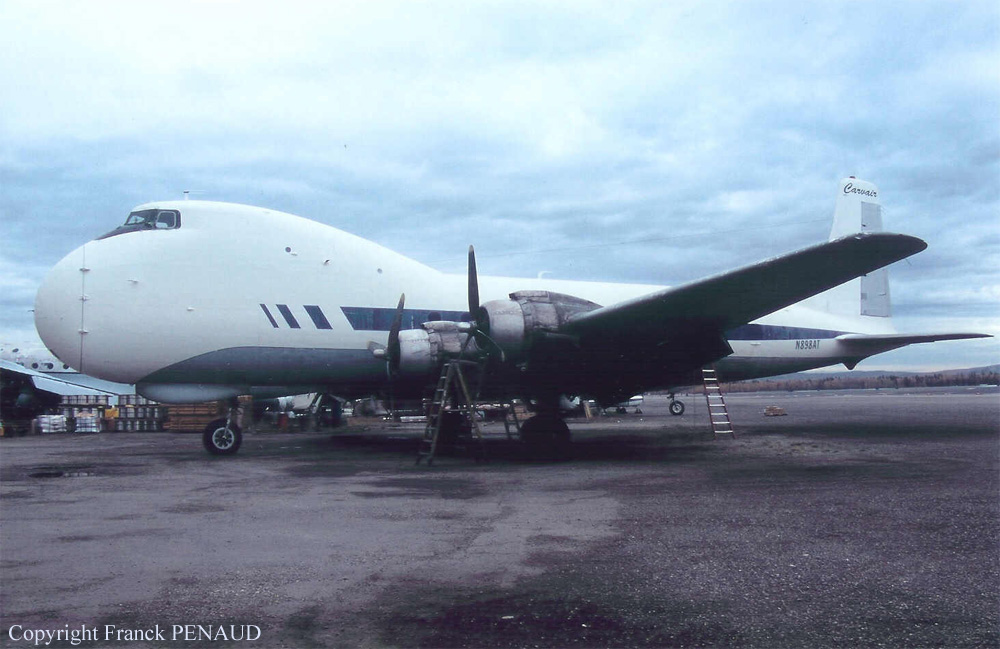
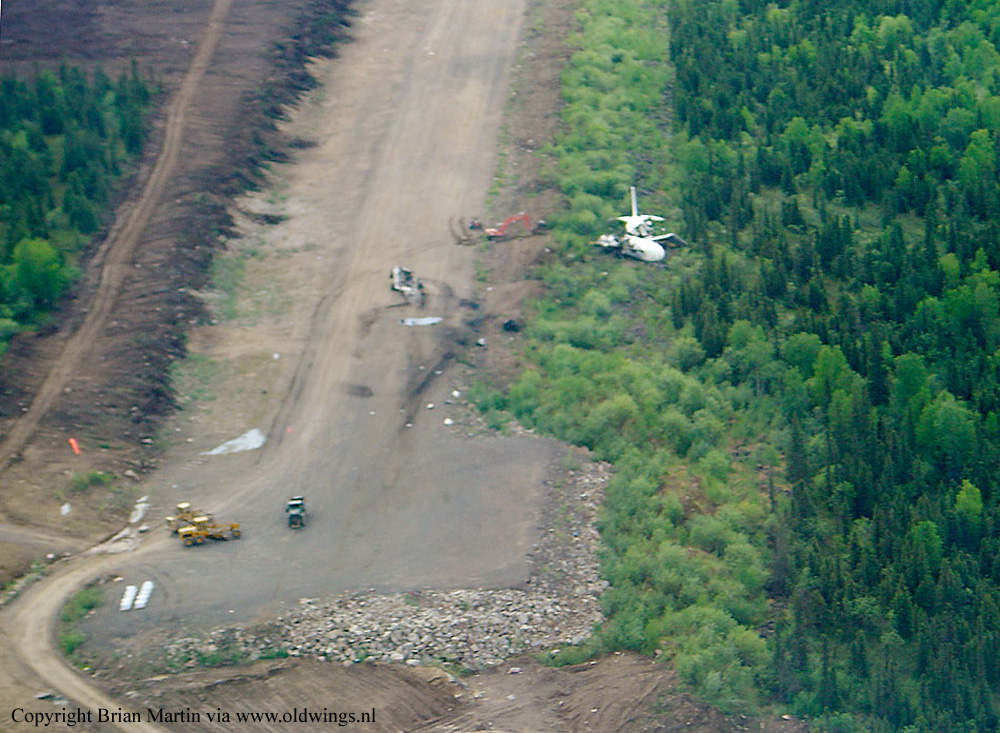

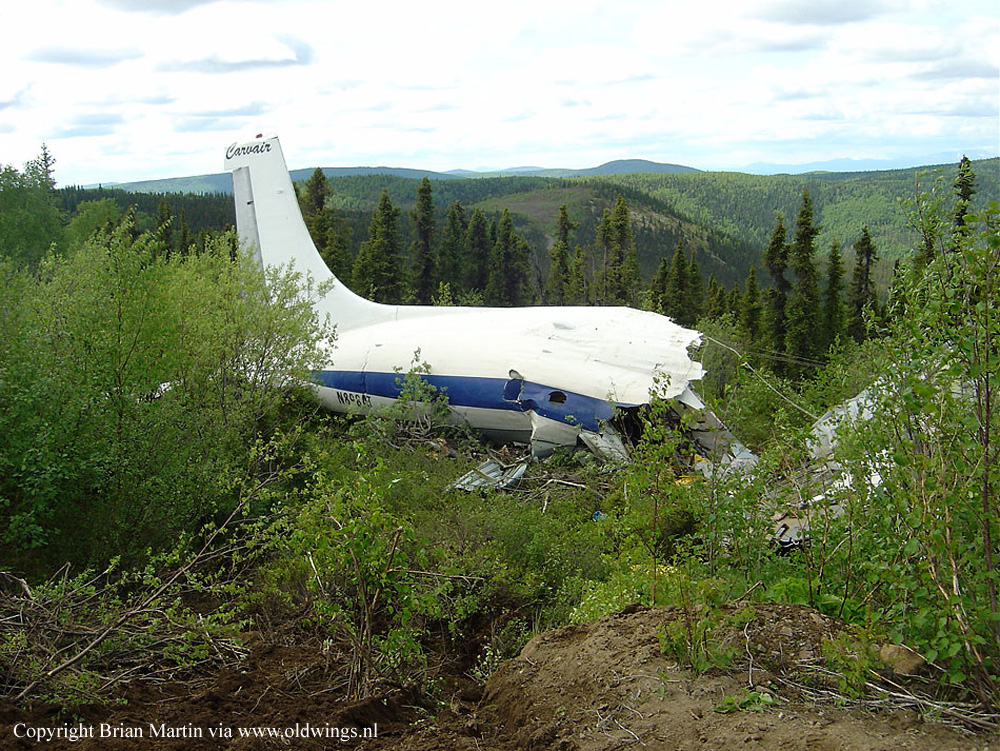
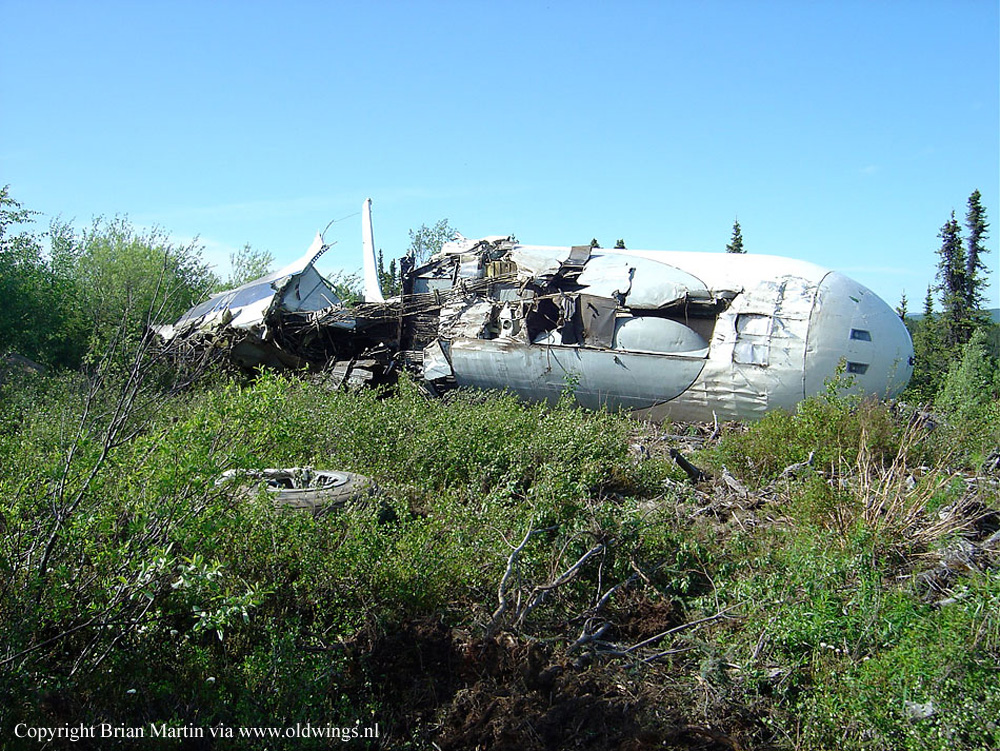


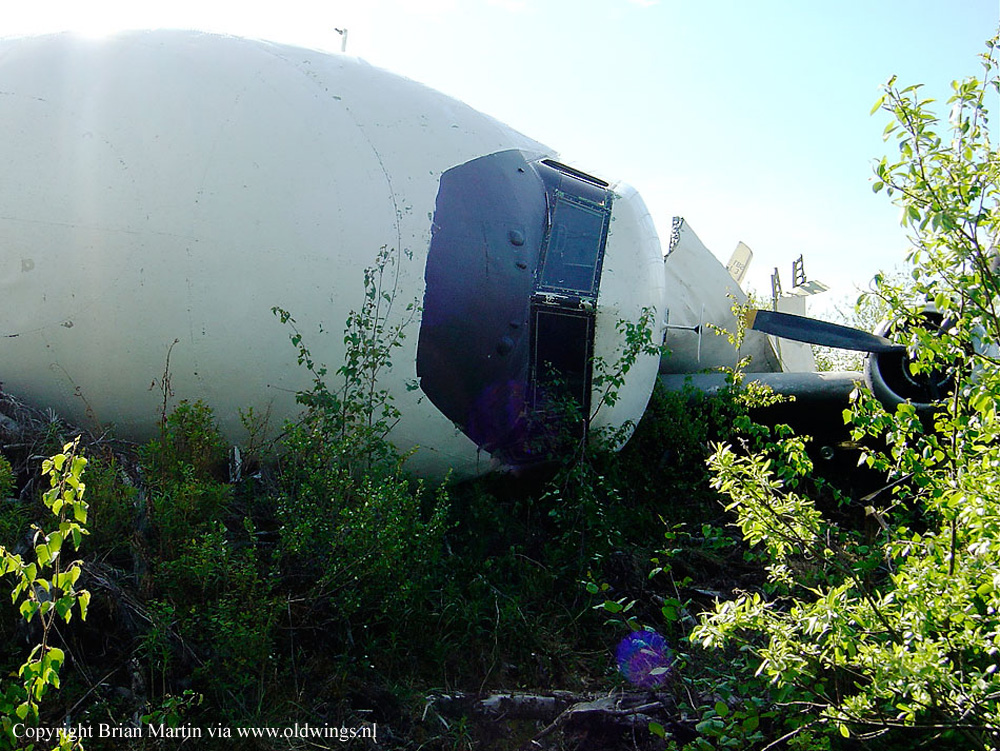
Crash of a Douglas C-54G-DC Skymaster near Nenana
Date & Time:
Jan 17, 2007 at 1550 LT
Registration:
N82FA
Survivors:
Yes
Schedule:
Fairbanks - Nixon Fork Mine
MSN:
35960
YOM:
1945
Crew on board:
2
Crew fatalities:
Pax on board:
0
Pax fatalities:
Other fatalities:
Total fatalities:
0
Captain / Total hours on type:
1550.00
Copilot / Total hours on type:
61
Aircraft flight hours:
28933
Circumstances:
The flight crew was delivering a cargo of fuel in the four-engine airplane under Title 14, CFR Part 125, when the airplane lost power in the number 2 engine. The captain elected to shut the engine down and return to the airport. He said during the shutdown procedure, the engine caught fire, and that the fire extinguishing system was activated. The crew thought the fire was out, but it erupted again, and the captain elected to land the airplane gear-up on the snow covered tundra. Once on the ground, the left wing was consumed by fire. An inspection by company maintenance personnel revealed that an overhauled engine cylinder had failed at its base, resulting in a fire. The airplane was not examined by the NTSB due to its remote location.
Probable cause:
The failure of an engine cylinder during cruise flight, which resulted in an in-flight fire, and subsequent emergency gear-up landing on snow-covered tundra. A factor in the accident was the failure of the fire suppression equipment to extinguish the fire.
Final Report:
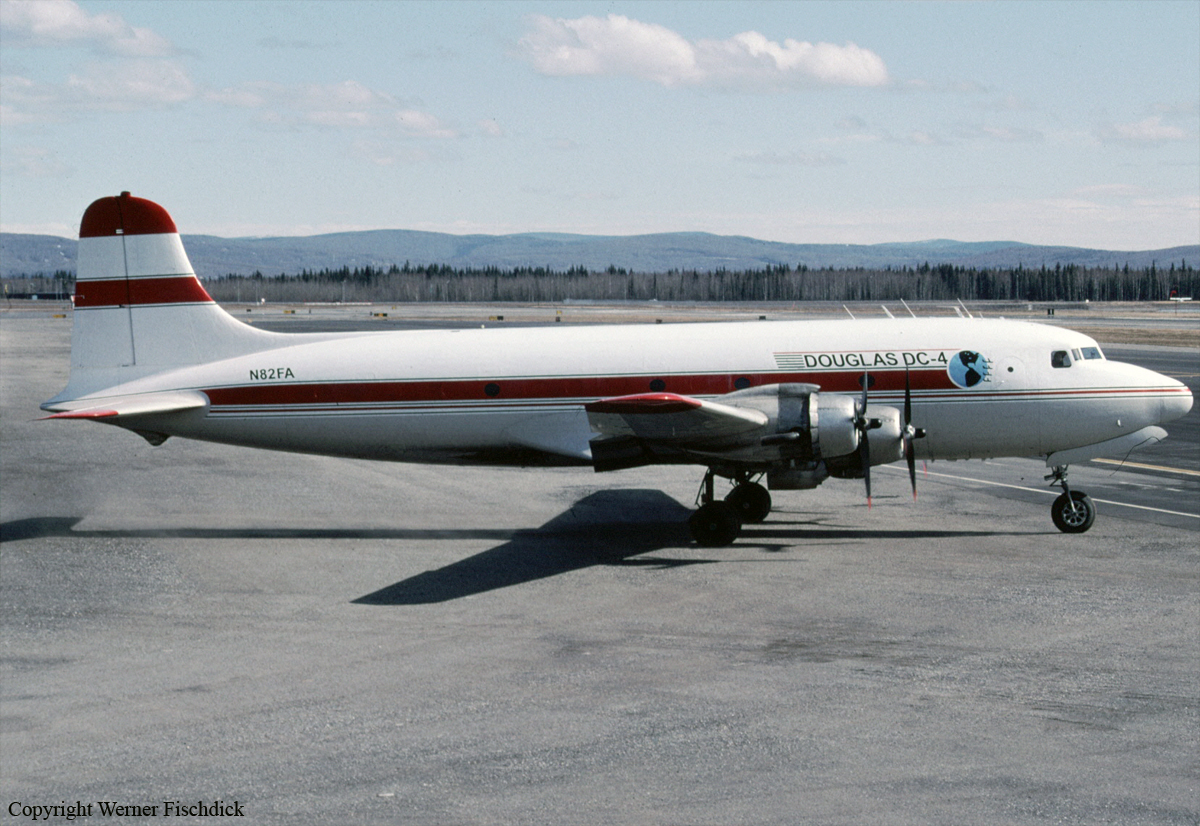
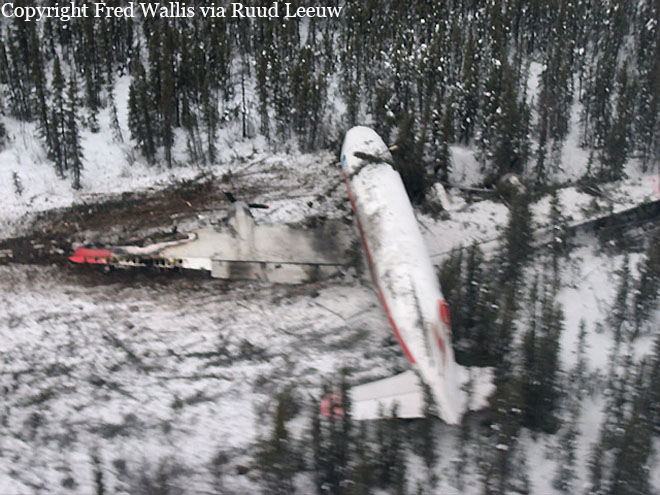

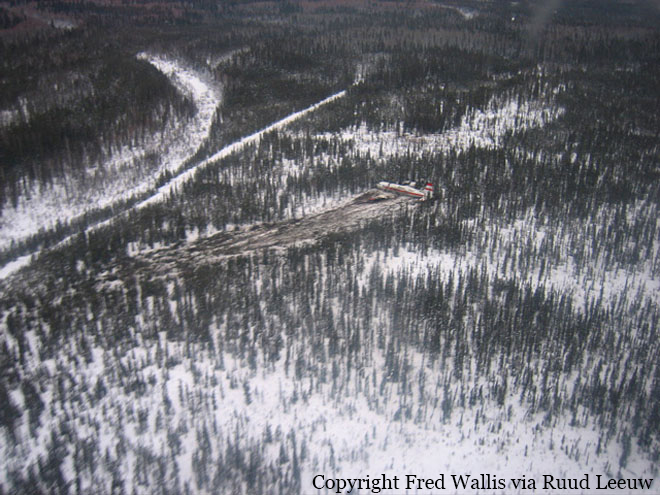


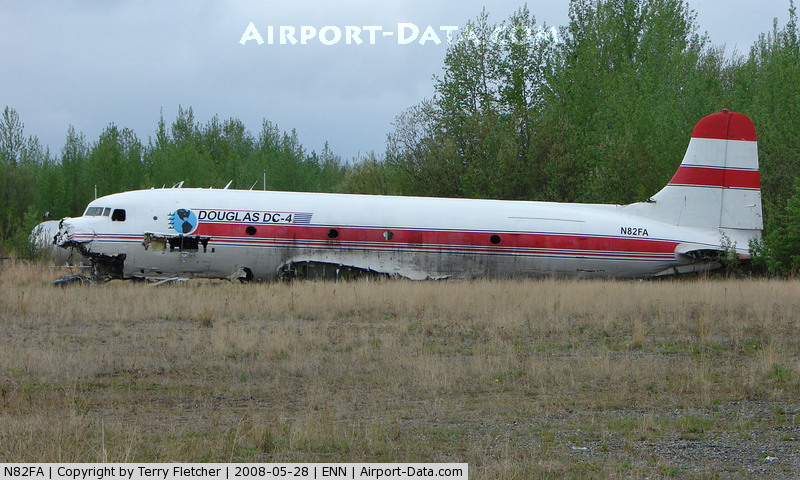
Crash of a Cessna 550 Citation II in Fort Yukon
Date & Time:
Sep 30, 2005 at 1210 LT
Registration:
N77ND
Survivors:
Yes
Schedule:
Fairbanks - Fairbanks
MSN:
550-0005
YOM:
1978
Crew on board:
2
Crew fatalities:
Pax on board:
2
Pax fatalities:
Other fatalities:
Total fatalities:
0
Captain / Total hours on type:
948.00
Copilot / Total hours on type:
141
Aircraft flight hours:
4262
Circumstances:
The flight crew, an airline transport certificated captain, and a commercial certificated co-pilot, were flying a restricted category, icing research equipped airplane in instrument meteorological icing conditions under Title 14, CFR Part 91. The purpose of the flight was to locate icing conditions for a prototype helicopter's in-flight icing tests. While in cruise flight, the airplane encountered icing conditions, and had accumulated about 1" of ice on the leading edges of the wings. The captain reported that he activated the wing deicing pneumatic boots, and the ice was shed from both wings. About 4 minutes after activating the deice boots, both engines simultaneously lost all power. The crew attempted several engine restarts, but were unsuccessful, and made a forced landing on frozen, snow-covered terrain. During the landing, the airplane struck several small, burned trees, and sustained substantial damage. The airplane's ice control system is comprised of two separate systems, one an anti-ice, the other, a deice. The majority of the wings' surfaces are deiced by pneumatic, inflating boots. The inboard section of the wings, directly in front of the engine air inlets, and the engine air inlets themselves, utilize a heated, anti-ice surface to preclude any ice accretion and potential for ice ingestion into the engines. The anti-ice system is not automatic, and must be activated by the flight crew prior to entering icing conditions. A researcher in the aft cabin photographed the airplane's wings before and after the activation of the deice boots. The photographs taken prior to the deice boot activation depicted about 1" of ice on the wings, as well as on the anti-ice (heated) inboard portion of the wings. The photographs taken after the deice boot activation revealed that the ice had been removed from the booted portion of the wings, but ice remained on the inboard, anti-ice segment. An engineer from the airplane's manufacturer said that if the anti-ice system was activated after ice had accumulated on the wings, it would take 2-4 minutes for the anti-ice portion of the wings and engine inlets to heat sufficiently to shed the ice. A postaccident inspection of the anti-ice components found no anomalies, and there was no record of any recent problems with the anti-ice system. The flight crew reported that the anti-ice activation switch is on the captain's side, and they could not recall if or when the anti-ice system was activated. They stated that they did not discuss its use, or use a checklist that addressed the use of the anti-ice system. A section of the airplane's flight manual states: "Failure to switch on the [anti-ice] system before ice accumulation has begun may result in engine damage due to ice ingestion." An inspection by an NTSB power plant engineer disclosed catastrophic engine damage consistent with ice ingestion.
Probable cause:
The pilot's improper use of anti-icing equipment during cruise flight, which resulted in ice ingestion into both engines (foreign object damage), the complete loss of engine power in both engines, and an emergency descent and landing on tree covered terrain. Factors associated with the accident were the icing conditions, inadequate crew resource management, and failure to use a checklist.
Final Report:

Ground explosion of a Douglas C-54B-1-DC Skymaster in Ganes Creek
Date & Time:
May 7, 2004 at 2130 LT
Registration:
N44911
Survivors:
Yes
Schedule:
Ganes Creek – Fairbanks
MSN:
10461
YOM:
1945
Crew on board:
2
Crew fatalities:
Pax on board:
0
Pax fatalities:
Other fatalities:
Total fatalities:
0
Captain / Total hours on type:
5630.00
Copilot / Total hours on type:
1560
Aircraft flight hours:
29667
Circumstances:
The crew of the 4 engine airplane started its engines for a positioning flight from a remote mining airstrip. Following the startup of the engines, an explosion occurred in the left wing area aft of the number 1 engine firewall and number 1 auxiliary fuel tank. The airplane was parked next to the mine's fuel storage tank, and the pilot added power on the remaining engines to move away from the storage tank. Within seconds of beginning to move, the number 1 engine fell off the burning wing, followed by separation and aft folding of the outboard end of the left wing. The outboard end of the wing, however, was still attached via control cables. The pilot taxied the airplane about 200 feet, dragging the partially burning left wing segment to a pond of water and shut down the remaining engines. The crew evacuated with no injuries. Water was applied to the airplane until the fire was extinguished, about 3 1/2 hours later. NTSB and FAA personnel did not travel to the scene, and the airplane was not recovered from the mining strip. The airplane's left wing powerplant and fuel system consists of the number 1 and 2 engines. Each engine is separated from the wing by a firewall. Within the wing, from outboard to inboard, the fuel tank system consists of the number 1 fuel tank, the left wing auxiliary fuel tank, and the number 2 fuel tank. Each wet-wing type fuel tank contains a submerged electrical boost pump, sump drain valves and fuel quantity transmitters. The fuel system has selector valves, crossfeed valves, and shut-off valves for each tank. An FAA inspector examined portions of the airplane that the operator supplied. The inspector examined a portion of the upper wing surface that had been blown away from the airplane during the initial explosion. He noted that the inside of the upper wing surface, normally positioned over the auxiliary tank, was not charred or sooted. A separated portion of the lower wing surface, near the auxiliary boost pump, was sooted and charred. The aft side of the number 1 engine firewall was not charred. A portion of the number 1 engine nacelle was oily, but not sooted or charred. The operator located the auxiliary in-tank boost pump and sent it to the FAA. The boost pump impeller, encased in a small wire cage, was not melted and could be turned by hand. The body of the pump was sooted but not thermally damaged. Its wire connectors and one fuel line were melted. A smaller line, what appeared to be a return line, was not melted.
Probable cause:
A fuel tank explosion in the left wing auxiliary fuel tank, and subsequent fuel fire that occurred during engine start for an undetermined reason.
Final Report:
